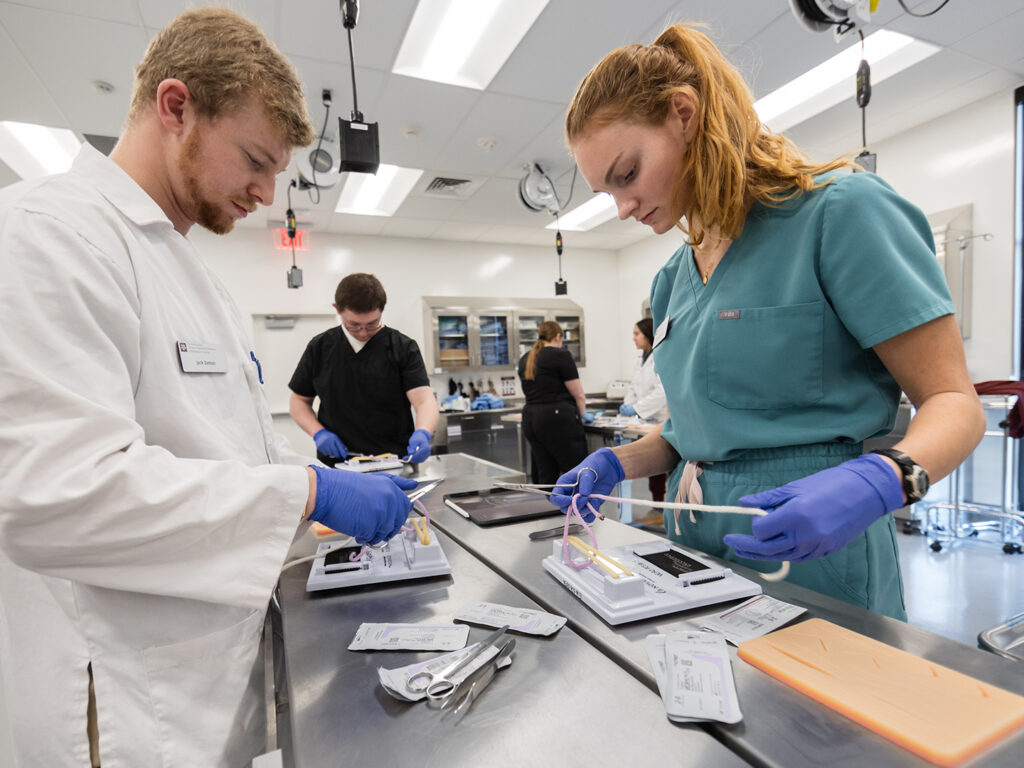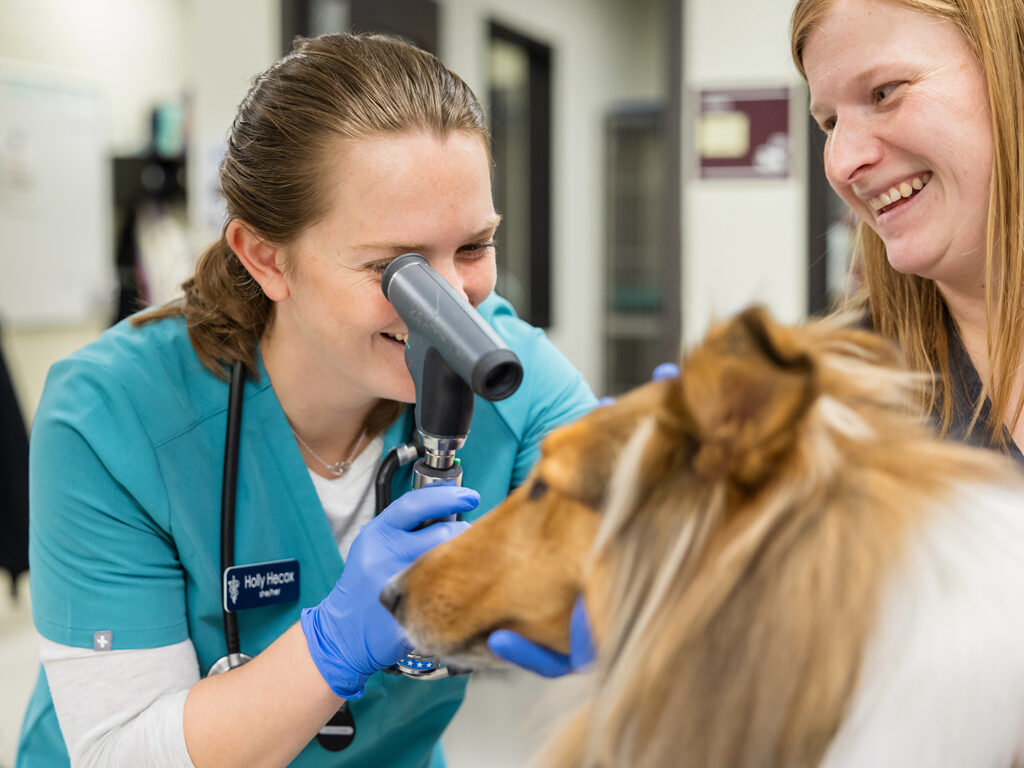Texas A&M Veterinary School Rises In National, Global Rankings
Story by Megan Bennett, VMBS Communications

Photo by Jason Nitsch ’14, Texas A&M School of Veterinary Medicine & Biomedical Sciences
The Texas A&M School of Veterinary Medicine & Biomedical Sciences (VMBS) has climbed the veterinary school rankings to No. 4 in the United States and No. 7 in the world, according to the 2024 Quacquarelli Symonds (QS) World University Rankings in veterinary science.
Of the top 10 veterinary schools in the world, the VMBS is the only one that rose in the rankings this year, having gone up four places worldwide since 2023.
“We are proud to represent Texas A&M University so highly in the 2024 QS World University Rankings,” said Dr. John R. August, the Carl B. King Dean of Veterinary Medicine. “The Texas A&M School of Veterinary Medicine & Biomedical Sciences’ new ranking is a clear indication of the quality of our students, faculty, and staff, and of the positive impacts our education, research, and service initiatives have made across the state of Texas and beyond.”
For more than 100 years, the VMBS has been dedicated to enhancing animal and human health through transformational education, discovery, innovation, patient care, and public service that impact our diverse and evolving world.
The VMBS’ Doctor of Veterinary Medicine (DVM) program is one of the largest in the nation, with 180 students accepted each year. The program’s curriculum has been refined to prepare students for a variety of career paths within veterinary medicine; its success has been shown through the DVM Class of 2023 receiving the highest pass rate in the nation for the North American Veterinary Licensing Examination.
“We are thrilled to be recognized as one of the top seven veterinary programs worldwide,” said Dr. Karen Cornell, the associate dean for the DVM Professional Program. “Texas A&M strives for excellence in each of our three core missions — teaching, research, and service. This type of acknowledgement is not achieved without significant commitment and hard work on the part of the faculty, staff, and students.”
In their first three years of the veterinary curriculum, students complete a series of Professional & Clinical Skills courses that cover communication, decision making, and crisis management in addition to basic and advanced veterinary clinical skills. Fourth-year students then complete a year of clinical rotations at the Veterinary Medical Teaching Hospital (VMTH), Texas A&M’s largest educational laboratory and the state’s only veterinary medical teaching hospital.
At the VMTH, students help treat more than 25,000 cases each year and receive training from small and large animal veterinary specialists in more than two dozen services. Exceptional patient care and innovation are key values at the hospital that extend beyond the facility’s walls through veterinary clinical trials and primary care outreach clinics.

Photo by Jason Nitsch ’14, Texas A&M School of Veterinary Medicine & Biomedical Sciences
The VMBS is also a renowned center for research that supports both animal and human health. Excellence in research at the VMBS is evidenced, in part, by the millions of dollars obtained annually in extramural funding by faculty members, including significant funding from the National Institutes of Health, National Science Foundation, U.S. Department of Agriculture, private foundations, industry, and the State of Texas during recent years.
“The translational and biomedical research programs of the VMBS have far-reaching impacts and represent the high caliber of our faculty and of the training they provide to students,” said Dr. Ramesh Vemulapalli, VMBS executive associate dean. “We’re excited to see our research excellence recognized with the 2024 QS ranking.”
The school’s research efforts are an important aspect in training its more than 250 graduate students studying biomedical sciences, toxicology, genetics, science journalism, and veterinary public health.
Recent growth ensures that the VMBS’ educational and research expertise stretches across the state.
The Veterinary Education, Research, & Outreach (VERO) program, housed on the West Texas A&M University campus in Canyon, brings more than 100 years of Texas Aggie veterinary excellence to the Texas Panhandle and is home to the VMBS’ 2+2 DVM program.
The program offers up to 18 students the opportunity to complete the first two years of their veterinary medical education at VERO before joining their peers in College Station for their third and clinical years. VERO is also a hub for research that addresses some of the most pressing issues in the food animal industry today, such as antimicrobial resistance and bovine respiratory disease.
In McAllen, the VMBS’ stretches veterinary care and research to the southern portion of the state with space in the new Texas A&M Health Nursing Education & Research Building set to serve as an important resource for the school’s faculty and students studying transboundary infectious diseases, large animal biosecurity, zoonotic diseases, veterinary public health, and bilingual public outreach in South Texas.
QS World University Rankings cover 55 subjects and consider academic reputation, employer reputation, and faculty research. These rankings are used by prospective students to help identify the leading universities in a particular subject.
###
For more information about the Texas A&M School of Veterinary Medicine & Biomedical Sciences, please visit our website at vetmed.tamu.edu or join us on Facebook, Instagram, and Twitter.
Contact Information: Jennifer Gauntt, Director of VMBS Communications, Texas A&M School of Veterinary Medicine & Biomedical Sciences, jgauntt@cvm.tamu.edu, 979-862-4216


